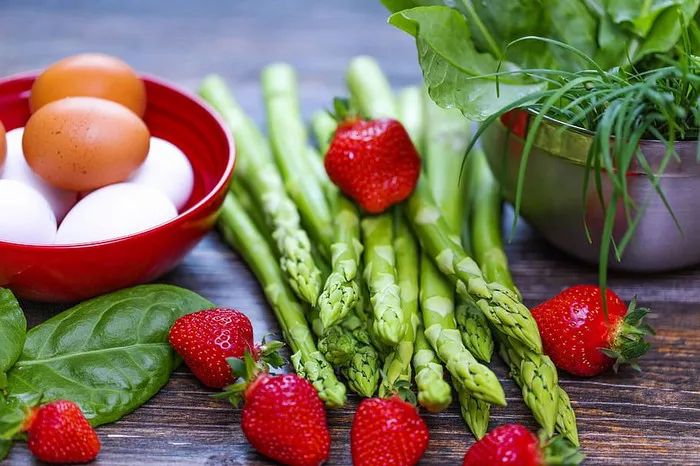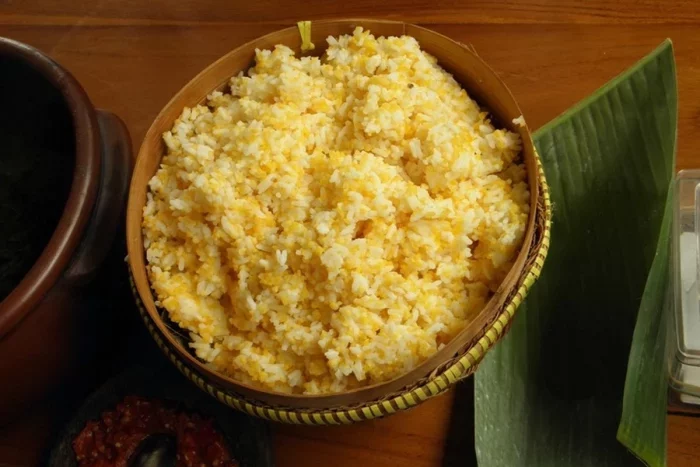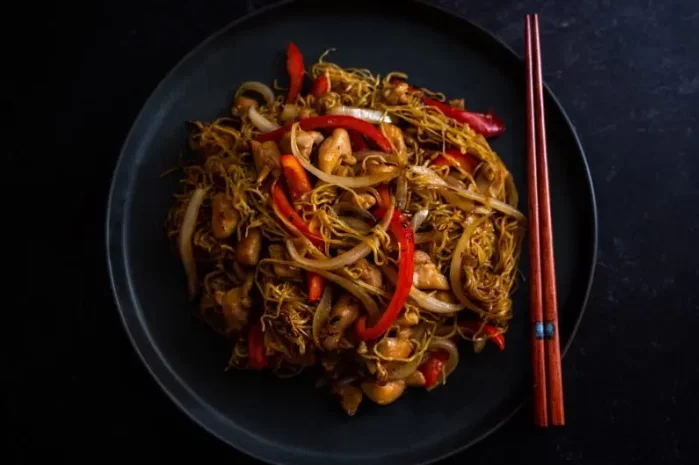Asian cuisine is incredibly diverse, with thousands of years of history and a vast range of ingredients and cooking techniques. From the fragrant curries of India to the fresh sushi of Japan, there is something for everyone. But if you are looking for the healthiest options, it can be challenging to know where to start. This article will explore various Asian foods, highlighting the healthiest choices based on their nutritional content and health benefits.
What Makes Food Healthy?
Before diving into specific dishes, it’s important to understand what makes food healthy. Generally, healthy foods are those that:
- Are rich in nutrients like vitamins, minerals, and antioxidants.
- Contain good-quality protein, healthy fats, and fiber.
- Have little or no added sugar or unhealthy fats (trans fats).
- Are minimally processed.
Asian cuisine offers many healthy foods that fit these criteria. Let’s explore them by country and type of dish.
Japanese Cuisine: Fresh and Nutritious
Japanese food is often regarded as one of the healthiest cuisines in the world. Traditional Japanese meals focus on fresh ingredients, balanced nutrition, and minimal use of fat. Here are some of the healthiest Japanese foods:
Sushi
Sushi, particularly the kinds made with fish like salmon, tuna, or mackerel, is a healthy option because it is rich in omega-3 fatty acids. These healthy fats are known for their anti-inflammatory properties and benefits for heart health. Sushi also includes vegetables like avocado, cucumber, and seaweed, which provide essential vitamins and minerals. Opting for sushi rolls made with brown rice instead of white rice adds more fiber to the dish.
Sashimi
Sashimi is thinly sliced raw fish or seafood, often served with a small amount of soy sauce and wasabi. It is high in protein and low in fat, making it an excellent choice for anyone looking to maintain or lose weight. The fish used in sashimi, like tuna and salmon, are packed with omega-3s, which help improve brain function and reduce the risk of heart disease.
Miso Soup
Miso soup is a traditional Japanese soup made from miso paste, tofu, seaweed, and green onions. Miso paste is fermented, providing probiotics that help with digestion and gut health. Tofu is an excellent source of plant-based protein and contains essential amino acids. The soup is low in calories, making it a perfect light appetizer or side dish.
Edamame
Edamame, or boiled young soybeans, is a popular snack or side dish in Japanese cuisine. Edamame is high in protein, fiber, and essential vitamins like vitamin K and folate. It is also rich in antioxidants, which help protect the body from oxidative stress and inflammation.
Chinese Cuisine: A Rich Blend of Flavors and Health Benefits
Chinese food is known for its variety of flavors, from spicy to sweet and sour. While many Chinese dishes are high in oil and sugar, there are also many healthy options to choose from. Here are some of the healthiest Chinese foods:
Stir-Fried Vegetables
Stir-frying is a popular Chinese cooking method that preserves the nutrients in vegetables while enhancing their flavor. Stir-fried vegetables like bok choy, Chinese broccoli, mushrooms, and bell peppers are rich in fiber, vitamins, and minerals. The key to making stir-fried vegetables healthy is to use a small amount of healthy oil, such as sesame oil, and avoid using too much soy sauce, which can be high in sodium.
Hot and Sour Soup
Hot and sour soup is a flavorful, low-calorie option that is rich in nutrients. It contains ingredients like mushrooms, tofu, bamboo shoots, and vinegar, which are all packed with vitamins and minerals. The soup’s spicy and tangy flavor comes from ingredients like chili paste, vinegar, and pepper, all of which have health benefits. Chili peppers, for example, contain capsaicin, which is known to boost metabolism and reduce inflammation.
Steamed Dumplings
Dumplings can be a healthy option, especially when steamed rather than fried. Steamed dumplings made with lean meat like chicken or shrimp, and filled with vegetables like cabbage or mushrooms, offer a good balance of protein and fiber. Dumplings made with whole wheat flour or brown rice flour will also provide more fiber than those made with refined white flour.
Congee
Congee is a type of rice porridge commonly eaten for breakfast in China. It is made by simmering rice in a large amount of water, resulting in a soft, creamy dish. Congee is often served with toppings like pickled vegetables, tofu, or lean meats. It is low in calories and easy to digest, making it a great option for people with digestive issues or those looking for a light meal.
Korean Cuisine: Fermented Foods and Bold Flavors
Korean food has gained popularity worldwide, and it is known for its bold flavors and health benefits. Many Korean dishes are made with fermented ingredients, which are rich in probiotics and have numerous health benefits. Here are some of the healthiest Korean foods:
Kimchi
Kimchi is a fermented vegetable dish, typically made with napa cabbage and radishes, and seasoned with chili peppers, garlic, ginger, and fish sauce. Kimchi is loaded with probiotics, which promote a healthy gut microbiome and improve digestion. It is also low in calories and rich in fiber, vitamins A and C, and antioxidants.
Bibimbap
Bibimbap is a popular Korean dish made with rice, assorted vegetables, a fried egg, and often some meat like beef or chicken. It is typically served with a spicy gochujang (Korean chili paste) sauce. Bibimbap is a balanced meal that contains protein, fiber, and essential vitamins from the vegetables. To make it even healthier, you can use brown rice instead of white rice and add extra vegetables.
Grilled Fish
Grilled fish, such as mackerel or cod, is a common dish in Korean cuisine. Fish is a great source of lean protein and omega-3 fatty acids. Grilling is a healthy cooking method because it uses less oil than frying. Korean grilled fish is often served with a side of kimchi and a small bowl of rice, making for a balanced and nutritious meal.
Japchae
Japchae is a dish made with stir-fried glass noodles, vegetables, and sometimes meat. The noodles are made from sweet potato starch, making them a healthier alternative to regular noodles. Japchae is high in fiber and antioxidants, and it can be easily made vegetarian by adding more vegetables and tofu instead of meat.
Thai Cuisine: Fresh Herbs and Balanced Flavors
Thai food is known for its combination of sweet, sour, salty, and spicy flavors. Many traditional Thai dishes use fresh herbs and ingredients like lime, chili, basil, and lemongrass, which provide health benefits. Here are some of the healthiest Thai foods:
Tom Yum Soup
Tom Yum is a spicy and sour soup made with ingredients like shrimp, mushrooms, lemongrass, lime leaves, and chili peppers. This soup is low in calories and packed with antioxidants and anti-inflammatory properties from the herbs and spices. Shrimp adds protein, and the broth is light and flavorful, making it a great choice for a healthy meal.
Green Curry with Vegetables
Green curry is a fragrant and spicy dish made with green curry paste, coconut milk, and various vegetables like eggplant, bell peppers, and zucchini. While coconut milk is high in fat, it contains healthy medium-chain triglycerides (MCTs), which can boost metabolism. The vegetables in green curry are rich in fiber and vitamins, making it a balanced dish when served with brown rice.
Som Tum (Green Papaya Salad)
Som Tum is a spicy and tangy salad made with green papaya, lime, chili, peanuts, and fish sauce. It is low in calories and packed with fiber and vitamins, particularly vitamin C. Green papaya is rich in enzymes that aid digestion, while the chili and lime provide antioxidants that support immune health.
Thai Spring Rolls
Thai spring rolls are made with fresh vegetables, herbs, and sometimes shrimp or chicken, all wrapped in rice paper. These rolls are low in calories and high in fiber, vitamins, and minerals. They are typically served with a light dipping sauce, making them a healthy appetizer or snack option.
Indian Cuisine: Spice and Nutrition
Indian food is famous for its vibrant use of spices, many of which have health benefits. While Indian cuisine can be rich and hearty, there are plenty of healthy options that focus on vegetables, legumes, and whole grains. Here are some of the healthiest Indian foods:
Lentil Dal
Dal is a staple in Indian cuisine, made from lentils or other legumes. It is packed with plant-based protein, fiber, and iron. Lentils are also rich in folate and antioxidants. Dal is typically served with rice or flatbreads like roti, making for a balanced and nutritious meal.
Tandoori Chicken
Tandoori chicken is marinated in a mixture of yogurt and spices, then grilled or baked. The yogurt adds protein and calcium, while the spices like turmeric and cumin provide antioxidants and anti-inflammatory properties. Tandoori chicken is lower in fat compared to fried chicken, making it a healthier option.
Chana Masala
Chana masala is a flavorful dish made with chickpeas, tomatoes, onions, and spices like cumin, coriander, and turmeric. Chickpeas are a great source of protein, fiber, and essential minerals like manganese and folate. This dish is filling and nutritious, making it a great choice for vegetarians.
Raita
Raita is a yogurt-based side dish often served with Indian meals to help balance the spiciness of the food. It is made with yogurt, cucumber, mint, and spices like cumin. Raita is rich in probiotics, which support digestive health, and the cucumber provides hydration and fiber.
Conclusion
Asian cuisine offers a wealth of healthy food options, from sushi and sashimi in Japan to lentil dal and tandoori chicken in India. The healthiest Asian foods are typically those that are made with fresh ingredients, focus on plant-based foods, and avoid excessive use of unhealthy fats and sugars. By choosing dishes that are rich in protein, fiber, vitamins, and antioxidants, you can enjoy delicious meals while promoting your overall health.
Related topics:

























